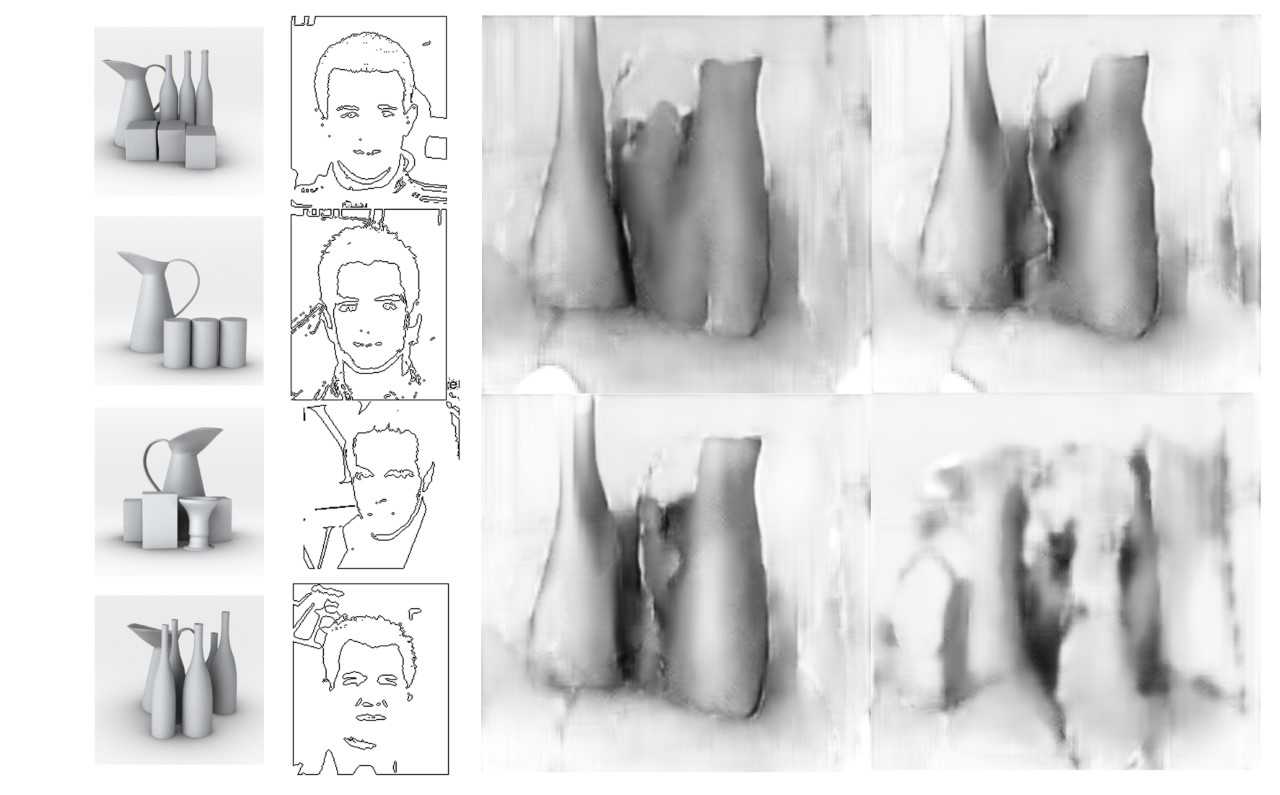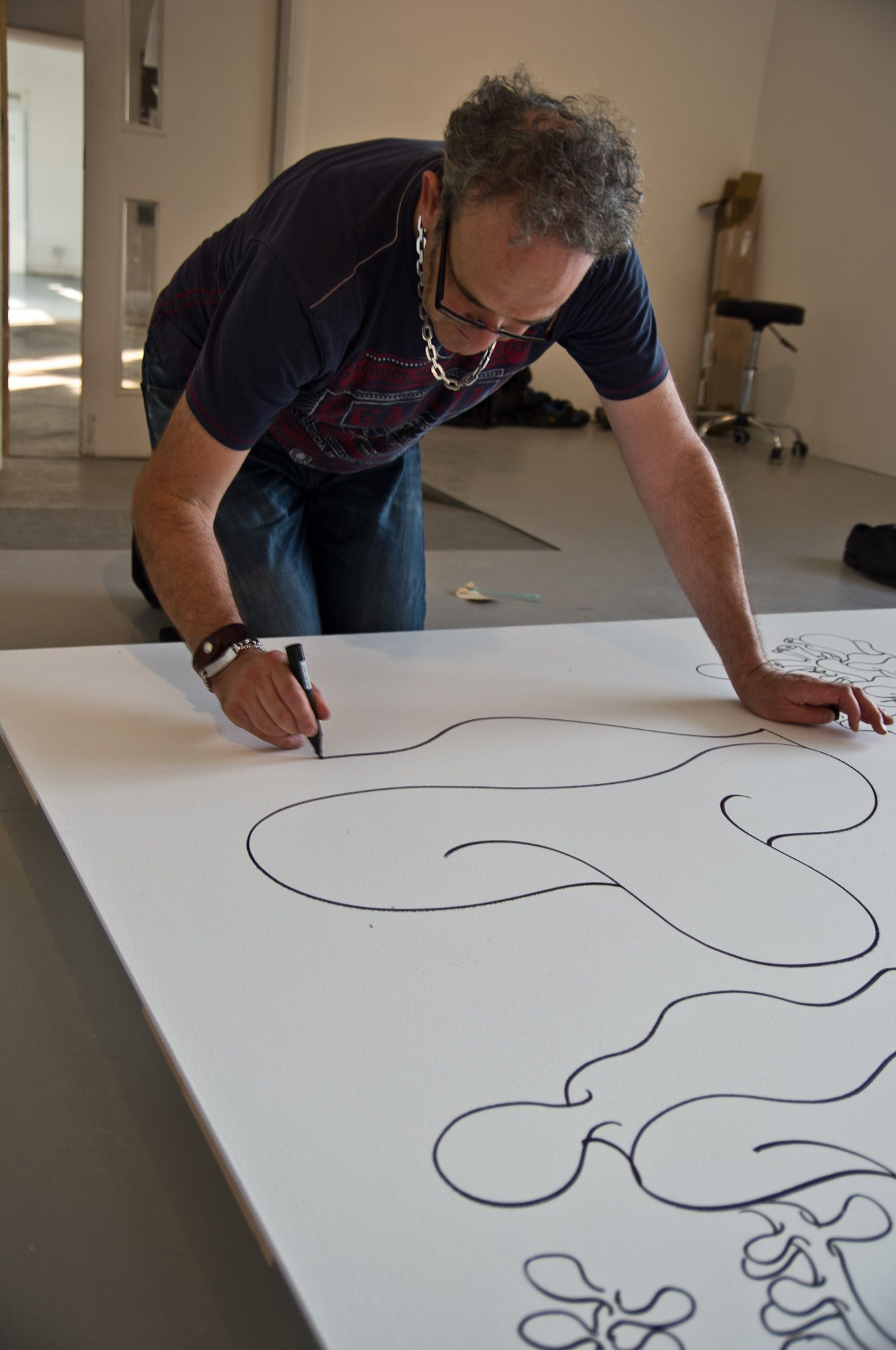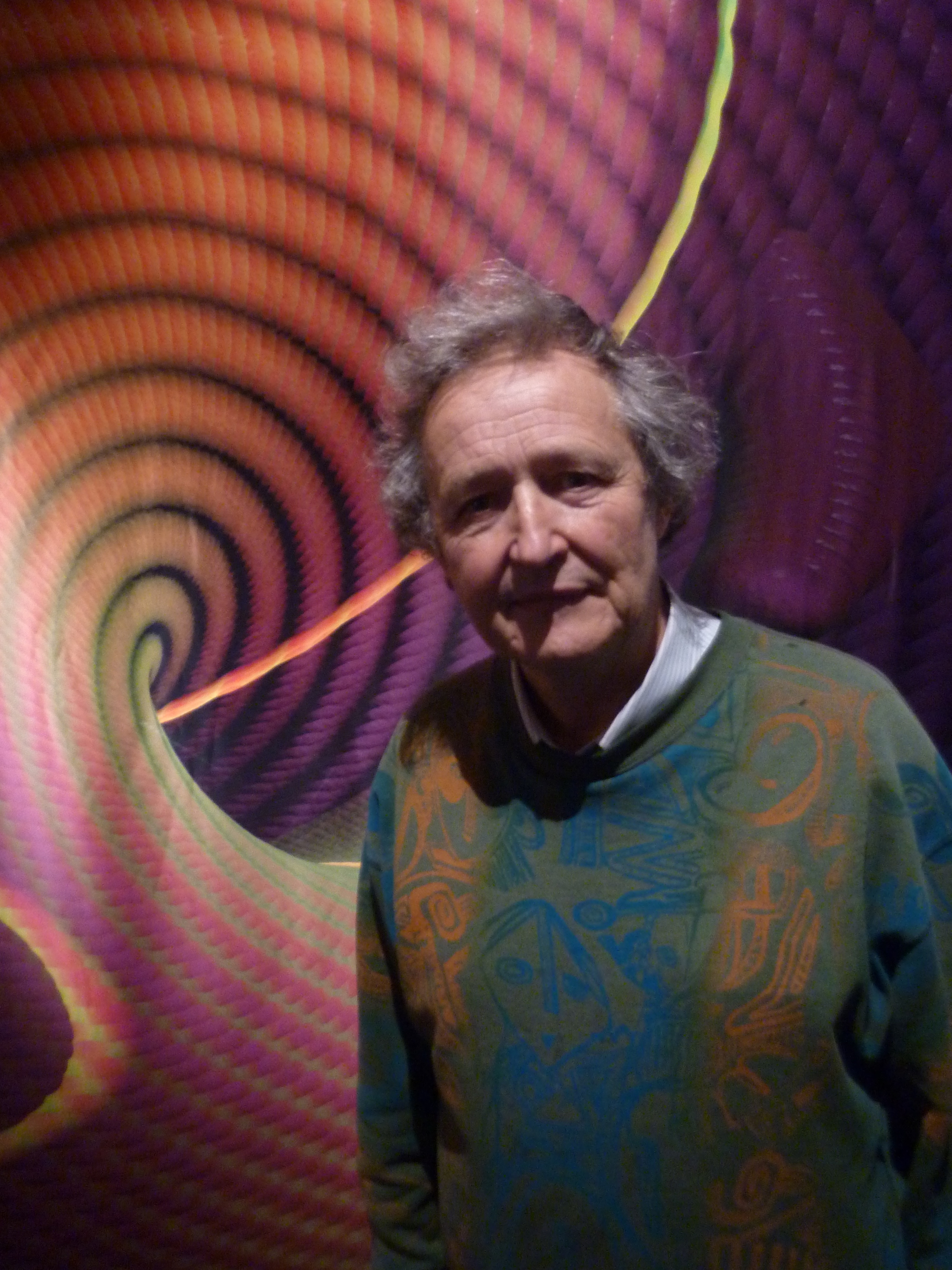

PC Computer, screen, Nvidia GeForce GTX 1080, Webcam. Custom software written in Python and a range of languages using Advanced Machine Learning Techniques, 2018
An interactive installation which combines the traditions of still life painting and portraiture. In the gallery the viewer walks up to the installation, and the webcam captures their face and the computer automatically using machine learning creates a unique Giorgio Morandi-style pot painting scene shaped by the image data from the viewer's face which is presented back to the viewer.
Technically the work uses a specific Generative Adversarial Network called DiscoGAN which is a machine learning algorithm capable of learning cross-domain relationships without any explicitly paired data. The model takes one image in one domain as an input and generates its corresponding image in another domain. This machine learning model works with two different GANs coupled together, each of them ensures the generative functions can map each domain to its counterpart domain. In Morandi Pot-traiture the computer paired the contour drawing of the pots, faces and an image representation of the original paintings of pots, and it learned to predict a still life painting from a contour drawing of a face from the webcam.
The work draws also loose inspiration from the painting of the 16th Century Painter Guiseppe Arcimboldi who painted portraits of faces made from vegetables, fish and books.

Guido is a Research Associate part-time at Goldsmiths (University of London) working on Protein Docking and is a part-time PhD student under William Latham. His research focuses on augmented visual creativity and he is currently exploring the potential of Machine Learning and AI as a tool to augment visual creativity and aesthetic evaluation of images.
Guido’s skills include programming in python, javascript and C#, machine learning techniques in TensorFlow, Keras and Scikit-Learn, Dataexploration and visualisation using Pandas, Numpy and Seaborn, AI applications in Unity ML ,3D modelling for game, animation and 3D printing, game development in Unity3D. He has experience in developing VR installations using Unity3D and the HTC Vive headset. His interest now, which has developed over time, is to combine his traditional art practice with digital processes through innovative computation techniques, to produce a new set of computational tools for artistic exploration and human-computer interaction. His work includes data analysis and data visualisation using the Scikit-Learn library, automatic images classification and objects detection (using Keras and TensorFlow) and the implementation of programmed interfaces for aesthetic evaluation in Python and Unity3D. He graduated from the University of Turin with a degree in Economics.

William Latham is well known for his pioneering Organic Computer Art created in the late eighties and early nineties whilst a Research Fellow at IBM in Winchester working with Stephen Todd, which recorded in their 1989 book “Evolutionary Art and Computers” Major UK solo international touring exhibitions from that time include The Conquest of Form and The Empire of Form.
In 1993 he moved into Rave Music working with a number of bands including The Shamen and computer games development, working with Universal Studios, Warner Bros and Atari, for twelve years. In 2007 in returned to research and he became a Professor in Computer Art and Games Development at Goldsmiths University of London. In addition to progressing and exhibiting the Mutator VR Art project with Stephen Todd and Lance Putnam. He has worked on a range of research grant projects with Goldmiths collaborator Professor Frederic Leymarie in the fields of Protein Docking (BioBlox) with Imperial College and DNA and RNA with Oxford Weatherall Centre of Molecular Medicine, Oxford University (CSynth, FoldSynth). His Mutator VR Art Experience on HTC Vive developed with support from DC Labs with long term collaborator Stephen Todd with Lance Putnam has been exhibited to much acclaim at Ars Electronica in Linz, in Venice and in St. Petersburg (linked to The Hermitage Museum). He is Director and co-founder of of SoftV Ltd and London Geometry Ltd. William was a student at Oxford University and The Royal College of Art.

Mathematician and Senior Programmer: Stephen’s background was mainly at IBM, working at the UK Scientific Centre in Peterlee (relational database research) (1971-1979) and Winchester (1981-1993). Stephen’s work at IBM UKSC in Winchester began with molecular graphics and other applications of scientific visualization. This led to collaboration with William Latham on Computer Art and creation of the form synthesis program (FormGrow) and associated subjective user interface (Mutator) a collaboration that ran through the late 80s and early 90s.
From 1993 Stephen worked finally at IBM Hursley on the MQSeries (1993-2007) where he was responsible for the concepts and initial design of MQSeries Message Broker (now IBM Integration Bus). He has authored over 80 patents whilst he was at IBM.
In 2009 Stephen became a Visiting Professor, at Goldsmiths and restarted his long term collaboration with William Latham on the Mutator Project which had lain dormant for over 12 years, which they would then take into VR a few years later. Stephen also worked with Prof Frederic Fol Leymarie taking the Mutator VR technology and approach into a range of scientific visualisation domains including DNA and RNA visualisatuon and The Weatherall Institute of Molecular Medicine on the FoldSynth and CSynth projects, in addition to the Protein Docking Project with Imperial Collage and the visualisation of 3D Viruses in VR working with the York University Biology Group. He is co-author with William Latham of the 1992 book Evolutionary Art and Computing published by The Academic Press.
